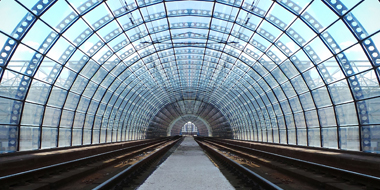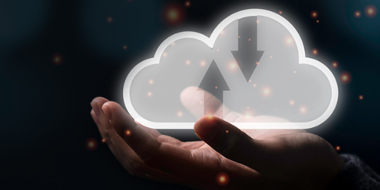Over cookies op deze website Onze websites hebben een aantal cookies nodig om goed te kunnen werken (verplicht). Bovendien kunnen andere cookies met uw toestemming worden gebruikt om het gebruik van de site te analyseren, de gebruikerservaring te verbeteren en voor publiciteit. Raadpleeg voor meer informatie de opties voor uw na te kijken. Door onze website te bezoeken, gaat u akkoord met onze informatieverwerking zoals beschreven in de IBMprivacyverklaring. Om een vlotte navigatie mogelijk te maken, worden uw cookievoorkeuren gedeeld door de hier vermelde IBM-webdomeinen.
Internet of Things (IOT)
IoT – Those who make the connections, persist
16/03/2018 | Written by: Peter Kouwen
Categorized: Cloud | Internet of Things (IOT) | Watson
Share this post:
The Internet of Things (IoT) is playing an increasingly important role in the use and management of critical infrastructures such as harbors, roadways and bridges, telecom, water and power supplies, airports and railway. Moreover, these infrastructures are becoming increasingly inter-related. A good example is the Port of Rotterdam, where sensor data is used to improve harbor processes. In addition, data exchange in the chain can make optimization of many adjacent processes possible. Think, for example, of loading trucks and the traffic streams in and around the port. The smart eco-system is even larger.
The example of Port of Rotterdam illustrates a new world of possibilities that are opened up by IoT in combination with the cloud, external data sources and cognitive intelligence. This combination offers companies the possibility to view their operational and business processes from new perspectives, in part, by linking their physical world to a digital representation, the so called ‘digital twin’. See also the ‘digital twin’ cheat sheet.
Three pillars of value
Connecting “things” with IoT only makes sense if the data can be turned into value. There are three ‘pillars’ on which the value of IoT and data usage rest
- Designing for a ‘connected world’,
- Managing connected operations, and
- Engaging with people and customers in new ways.
Initiatives can be undertaken in these three domains individually, but ultimately you cannot view these pillars separately from each another. Continual feedback and exchange of data between the real world and its digital reflection strengthens these three pillars both individually and as they mutually relate to one another.
The great thing about digital representation is that this accelerates and improves the design and engineering process. Whereas in the past, a scale model was created for, for example, a new automobile design, these days a digital 3D-model is used. Such a model can not only be visually evaluated at full scale, for example using virtual reality glasses, but – by applying algorithms and simulations – it can also be tested by the various disciplines in involved in the design process. When the physical automobile finally rolls of the assembly line, it in turn is equipped with hundreds of connected sensors that provide detailed feedback regarding the car’s actual performance. This data can then be applied to fine-tune, modify specific parts or design a subsequent model.
The same applies for virtually all industries and infrastructures that involve design, testing, construction, use, maintenance and optimization. Let’s take another look at our example of a major port such as that of Rotterdam. Here, the virtualization and measurement with IoT of the real world enables digital simulation of optimizing logistics streams, the use of waterways, bridges and quays, transshipment points, etc. Not only does this lead to optimization of the operation of the port and its customers, but this also enables shorter development cycles in modification and expansion, savings in (preventive) maintenance, and optimizing investment decisions. This is already occurring in practice.
Combining Sources
Our current technological possibilities not only include the lower price of technology and the greater availability of (sensor) data. The real benefit is only achieved when we cleverly use and combine the two and link them to external information sources. This combination puts measurements in context and enriches the existing knowledge to better manage and make more accurate predictions. For example, the Rotterdam Harbor uses an information service (API) in the IBM Watson IoT platform that taps The Weather Company for meticulous weather information, so that impending storms, changes in water levels or other weather circumstances can be anticipated. Over the longer term, investments can be optimized based on digital simulation and anticipation of impact in the real world. This requires collaboration and information exchange between parties within the chain or within the larger eco-system, such as governments, builders, transporters, users, insurers, parties who perform maintenance, etc.
Another example is elevator manufacturer KONE. KONE started to instrument and collect data from its elevators to optimize maintenance. As they collect and combine data from all elevators throughout the whole world, they apply analytics and cognitive algorithms to detect patterns that predict upcoming service needs. This not only optimizes their maintenance process and scheduling, but also enables KONE to provide new services and information to their customers. Using this information enables KONE customers, in turn, optimize their chains and “People Flow”. The value of the enriched data from collaboration increases for all.
Customer-specific
Similar is occurring in the automobile industry, where sensor data is used in the framework of analysis and maintenance, but can potentially provide customer-specific information, as well. Think of a lower insurance premium offered by insurers based on insight in driving behavior. This is not that different from the railway infrastructure manager, who can share the anticipated status of a particular route with the train operator, who in turn informs affected passengers of specific arrangements for their trip.
This brings us to the third pillar: new ways of engaging with people and customers. The insights gained from analysis and simulation of IoT and supplemental data are put into the hands those who can make better decisions or modify their behavior. Returning to the Port of Rotterdam example: an approaching container ship is provided with the data to optimize its arrival time, taking into account external circumstances such as harbor traffic, available capacity, the weather while and fuel usage, while it is still en route. This is aligned with the companies and drivers that provide further transport and want to optimize their trucks, people and their fuel consumption. The customers and end users benefit from an optimized chain process. In the case of KONE or the railways, they engage in a continuous relationship with their customers and end-users as they provide insights that help them optimize their flow.
Again: the more the involved parties and industries link their data, the more is possible. What if all the parties mentioned above combined their data? This would make fantastic predictions regarding how the movement of goods, means of transport and people possible. To come back to the three pillars: with that information you could then build, manage and feed important information back to the customer.
Intelligent layer
As IBM, we help our clients to capitalise on Digitization of the Physical world, by providing AI powered IoT Solutions. We increasingly play a role in bringing all parties and their information streams together in a secure, reliable manner. We do this thanks to our knowledge and expertise in the areas of technology and sectors, but also by bringing together complementary partners in the areas of connectivity, sensor technology, hardware, data and information. We integrate technologies and parties. Then we place an intelligent layer on top of this, which makes it possible for both users and processes to utilize this data and technology: designing and building for a connected world, optimizing maintenance and availability and providing new ways for interacting with their customers.
No one can do all this alone, which is why we collaborate closely with our partners. In our function as integrator, we combine experiences in applying the IoT for different customers with our investments in specific solutions for industries. We also have a good picture of the possibilities and difficulties involved in actually utilizing IoT technology. It turns out that it is not so much the technique, but rather implementing the changes the technique makes possible is the greatest challenge. We help companies think about their role in increasingly smarter digital eco-systems, which continually involves more and greater mutual dependencies. We help these companies take concrete steps and achieve real impact with IoT, data and cognitive computing.
After all, these are all interrelated. Those who make the connections, persist.
Read the IBV Study Intelligent Connections, Reinventing the Enterprise with Intelligent IoT.

Peter Kouwen
Executive Partner | Global Center of Competence | Internet of Things & Watson-IoT @ IBM
More Internet of Things (IOT) stories
IBM-onderzoek: één leverancier voor Cloud is achterhaald
Branche gerelateerde regelgeving wordt gezien als een belangrijk obstakel voor Cloud adoptie door 68 procent van de respondenten. Eén derde van de respondenten ziet security niet als topprioriteit ondanks cyberaanvallen. Uit nieuw wereldwijd onderzoek van IBM (blijkt dat er een drastische verschuiving heeft plaatsgevonden in de zakelijke behoeften van Cloud omgevingen. Slechts één procent […]
Take out complexity and deliver business value with hybrid multicloud
Taking cloud to scale has proven a challenge for many organizations. 60% of European organizations are still running their business-critical application on-premise, and have not yet moved the majority of applications in a hybrid or multicloud architecture, according to IDC’s 2021 Multicloud survey of 925 IT and business decision makers from across Europe from […]
Together to the top – with future ready business applications
Fast-track your hybrid cloud transformation to Microsoft Azure with security and confidence Being partners with Microsoft for 30 years and having integrated with Redhat and Nordcloud, we at IBM Benelux thought it was high time to get together and do a webinar. Maybe a webinar is not one of the most original type of […]






























